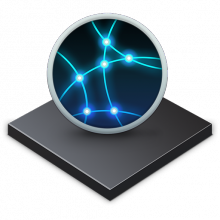Dante Via is a software application that allows you to quickly and easily connect high-quality audio between audio-capable hardware devices and software applications, both locally and across a Dante network.
Free 30-Day Trial
To start your free 30-day trial of Dante Via, just download the software and follow the instructions to start the trial. Please note that you can only activate a 30-day trial of Dante Via once per computer.
Please note that Dante Via regularly needs to access the Internet to validate the license. If your computer is not continually connected to the Internet, you may be prompted to connect it from time to time to keep the license active.
- Support for Windows 11
All operating systems should be updated to the latest available version.
Minimum System Requirements
- Core i5 CPU
- 64-bit processor
- 4 GB RAM
- 1 GB storage
- 1Gbps network interface / adaptor
- 1Gbps network switch (Wi-Fi is not supported)
Note: Dante Via is not supported on virtual machines
Installing Dante Via
Note: You will be required to restart your computer after installation, before you use a new version of Dante Via.
- Ensure you are logged on to your computer as an administrator.
- Ensure that Dante Virtual Soundcard is not running.
- Navigate to and double-click the downloaded Dante Via installer file.
- Read the license agreement. If you agree to the terms, select the 'I agree' checkbox and click Install.
- If you do not agree to the terms, click Close.
- Confirm / acknowledge any Windows security prompts that are displayed.
- When Dante Via has finished installing, restart your computer. This is an important step - Dante Via may not function correctly if you do not restart your computer after installation.
- DS-447: Add support for Windows 11
- VIA-2354: Duplicate application names can cause duplicate channels on the Dante network.
- VIA-2641: Subscriptions between Dante Via devices may not automatically recover after rebooting DDM. Workaround: Resubscribe the affected channels.
- VIA-2642: Enrolled Via starts up unenrolled if restarted with DDM offline. Workaround: Stop and restart Dante Via.
- VIA-2639: When enrolled in a domain, Dante Via might not display the correct domain manager hostname if it has changed.
- VIA-2612: When two (or more) network interfaces are available on the computer, Dante Via may still appear on the network that is not currently selected.
- VIA-2582: Application icons in a multi-channel device are sometimes not displayed correctly if subscribed from Dante Controller.
- PP-26: Avast Business Antivirus can prevent Dante Via from installing correctly. Temporarily disable Avast to install Dante Via.
- PCS-623: The click, response area of buttons on the Dante Via UI can move as Windows screen scaling increases beyond 175%
- PCS-2573: Windows can block the detection of audio applications on the Dante Via Virtual Soundcard. If Dante Via is the default soundcard and it still cannot detect audio applications, correctly please contact Audinate support for more information on a possible fix.
- SODA-1016: Sometimes a network device subscription to an application will show as "Unresolved: Cannot find this channel on the network". To fix Restart the application.
- DS-511: Disconnecting from a Remote Desktop session while running Dante Via may cause the Dante Via Session Manager to crash. Workaround: Ensure Remote Desktop sessions remain active whilst using Dante Via.

